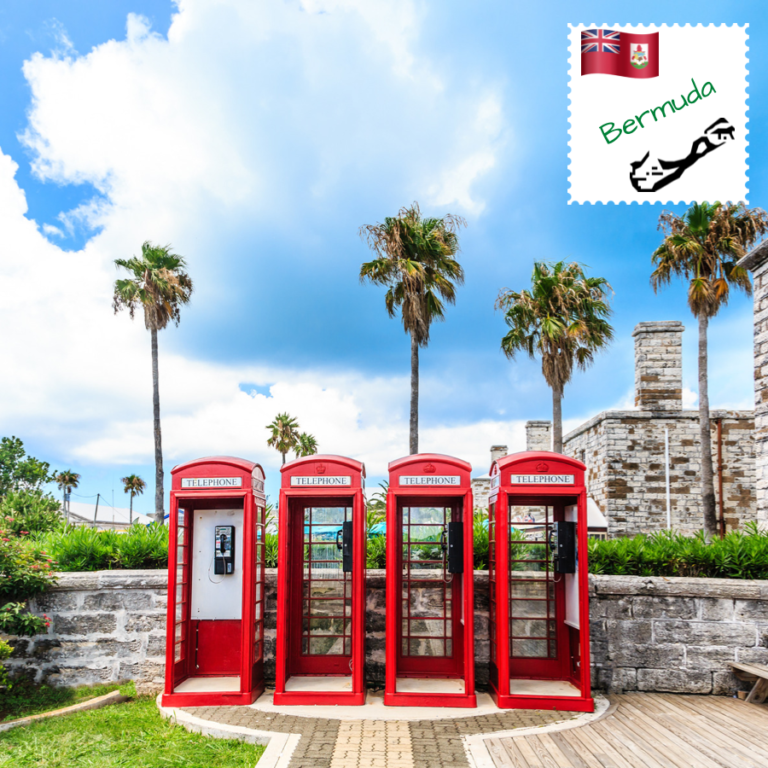
Pink sand fills the cracks between my toes as I make my way to the place where the sand and water kiss. Before me, is a beautiful landscape of pink sand, blue waters, and rock areas which is great for snorkeling. For me, Horseshoe Bay Beach is one of my top favorite beaches in the world. Having visited the island times, I always return to this same beach basking under the Sun’s rays and swimming in the gentle bay waters. Horseshoe Bay Beach is famous and located in Southampton. It is one of the beaches that make Bermuda known for its pink-sand beaches along with its gentle landscape, colorful flowers, distinctive architecture, and romantic English atmosphere.
Bermuda is the formation of worn-off tops of volcanoes capped with coral. It is the world’s most northerly group of coral islands (a archipelago), despite being referred to in the singular. Bermuda actually consists of more than 100 islands that stand alone in the Atlantic. Highlighting the island’s natural beauty, manicured lawns front pastel-colored cottages. Homes are made from blocks of limestone cut from quarries on hillsides. The stone is used for both building blocks and thin slabs for roofing. The roof stones are cemented down and whitewashed. Roofs in Bermuda channel rainwater to drainpipes connected with underground storage tanks. Rainwater is the only fresh-water source available, so by law, homes are required to have sloping roofs to catch the rain. This has never stopped tourists from flocking to the island.
Tourism developed in the Victorian times and has continued to be important to Bermuda’s economy, although international business has surpassed its importance in the more recent years. 80% of the visitors to Bermuda come from the United States, which results from the Bermudian dollar being pegged to the U.S. dollar making it easy for U.S. tourists to spend freely.



Once a former British colony, the predominant language in Bermuda is English. Though English is the predominant language, the Bermuda’s second most-spoken language is Portuguese.

Bermuda’s currency is the Bermudian dollar, pegged to the United State dollar; the two are used interchangeably.

You do not need a visa to go to Bermuda if you are a U.S. citizen; however, a valid passport book is required to enter Bermuda and to re-enter the United States by air. A birth certificate, government-issued photo ID, or passport card will not be enough to gain access into the country via air travel.

Most cellphones, particularly ones using GSM technology and having international service plans activated will work in Bermuda. Just make sure you have international data and roaming as part of your cellphone service plan. Additionally, Bermuda is a very internet savvy island: being considered one of the most wired countries in the world. With this being said, you should not have any issues finding internet availability at even local cafes on the island.

Like in the United States, it is customary to tip. Hotels – for bellhops and door poerters tip $5; gratuity for housekeeping tip between $3-$5 per day; and for room service tip between $5-$10

Widely available in the city of Hamilton, St. Geroge’s town, and the Dockyard.

You do not need a power plug adapter in Bermuda, when living in the United States. In Brmuda, the power plugs and sockets are of Type A and B, with a standard voltage of 120 V and a standard frequency of 60 Hz.

The best time to visit Bermuda is either March or April when the temperate weather becomes pleasant for beach bathing, even if it’s not quite warm enough for swimming yet. And the prices aren’t as high as they aren’t during the busiest season which is from May to October.
Getting around in Bermuda is easy. There are many different modes of transportation available even though rental cars are not. Whether your style is zipping around town on a scooter, pedaling from Point A to Point B, taking a convenient bus or taxi ride, or hopping aboard a ferry, you’ll find several convenient ways to see the island. Buses and ferries cover the island all year long and, since this is how most locals get around, they’re a great way to get a taste of Bermuda’s warm, welcoming culture. Rent a scooter or electric mini car to zip around to hidden gems, or hop on a ferry to see the island from the water as you get where you’re going.
All taxis are metered at government-set rates, and exact change is required unless you have a Transportation Pass (see below). Current taxi fares are as follows, based on travel between 6 am and midnight: For a 1- to 4-passenger taxi: $7.90 USD for the first mile, $2.75 USD for each additional mile For a 5- to 7-passenger taxi: $9.95 USD for the first mile, $3.50 USD for each additional mile The sightseeing rate is $50 USD per hour for a 1- to 4-passenger taxi or $70 USD per hour for a 5- to 7-passenger taxi.
The island’s buses are frequent, plentiful, and service most areas of interest. You can’t miss them – they’re pink with blue stripes. The island has 11 bus routes and 14 bus zones, each one covering about 2mi / 3.2km. Most buses leave from the Central Terminal on Washington Street, next to City Hall in the City of Hamilton.
As you would expect, virtually every car rental company has a presence in Puerto Rico, along with several local companies. Most renters must meet the same age requirements for renting a car on the mainland, United States: minimum age ranging from age 21 to age 25 to rent with a valid driver’s license. Daily rates can range from $8/day to $25/day.
Four public ferry routes offer a picturesque alternative for travel around the island. All ferries depart from the Ferry Terminal on Front Street in Hamilton.
The flavors of Bermuda are diverse, blending culinary influences, ingredients, and techniques from the Caribbean, British, West African, Native American, and Portuguese cultures. Many dishes have been varied, often very successfully, by what fish and meats, spices, and fruit or vegetables have been readily locally grown or are otherwise available in Bermuda. Creative local chefs and/or households have come up, since Bermuda was accidentally discovered in 1609 and salvaged Jamestown in Virginia in 1610 by bringing wild pigs from Bermuda, with inspired creations.
These islands were first deliberately settled by British colonists in 1612. Since then, Portuguese, Africans, West Indians, and North Americans have all, over more than four centuries, added their own pleasurable piquancy to the pot. Today, the island cuisine has evolved into hot, spicy, and traditional dishes, delicacies, and local seafood, all with a unique local twist. Residents and visitors really enjoy the local cuisine. It is often superb in taste and texture, especially for those who do not have to watch their weight or calorie or cholesterol count!
Today, almost all Bermuda foodstuffs are imported, mostly from or via the U.S., and are resold here at prices appreciably more expensive than in the U.S. due mostly to the customs or import duty and shipping costs. There are no local kosher foods.
When you go, be sure to sample these classic Bermudian specialties and check out the inventive spins that chefs throughout the island are bringing to the table.
Codfish Breakfast – a heaping plate full of boiled or steamed salt cod with boiled potatoes, onions, sliced bananas, a hard-boiled egg, and, occasionally, avocado slices. It’s topped with a tomato or butter onion sauce.
Fish Chowder – an aromatic blend of seafood and spice that often includes potatoes, tomatoes, onions, carrots, green peppers, and celery.
Bermuda Fish Cake – traditional Bermuda breakfast of codfish and potatoes, this dish also incorporates peas, rice, thyme, onion, and crispy bacon mashed together and flattened to make a patty-like fish cake.
Fish Sandwich – a perennial menu staple in Bermuda; the basic recipe is usually the same island-wide: deep-fried fillets of fish with tartar sauce piled on raisin bread or whole-wheat toast; go for “the works” and add on lettuce, tomato, grilled Bermuda onions, cheese, hot sauce, and coleslaw.
Hoppin’ John – a local favorite is also known as Hop ‘n’ John or Peas ‘n’ Rice, a savory dish made with black-eyed peas, sliced sausage, bacon or chicken, Bermuda onion, and a heap of brown rice, seasoned with garlic and thyme.
Black Rum Cake – a moist, buttery Bermuda black rum cake is a perfect finale to any meal
Spiny Lobster – this delicacy is smaller than its Maine counterpart and doesn’t have claws, so most of the tender, flavourful meat is found in the tail. Bermuda chefs often mix spiny lobster into chowder, tacos, and pasta sauces, but it’s just as delicious with a brushing of butter.
Rockfish (Black Grouper) – “Bermuda style” – pan-fried with grilled bananas and toasted almonds in a lemon butter sauce.
Yellowfin Tuna – a mainstay of Bermuda’s waters in the spring and fall; the largest caught here weighs around 200 pounds. Made into steaks and pan-seared, the fish is a favorite of both locals and visitors.
Glasseye Snapper – Found in tropical seas all over the world, the glasseye (also known as the catalufa) is not actually a snapper; it’s a member of the bigeye family of fishes. Diners relish the buttery smooth flavor of the fish’s white flesh.
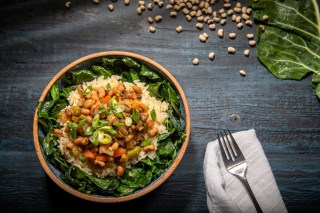
There are five primary types of accommodations in Bermuda: large resorts that boast private beaches, golf courses with on-site dining options; boutique hotels with their own unique design and amenities; small inns and Bed & Breakfasts, which in most cases include complimentary breakfast and afternoon tea; vacation rentals, including privately owned homes and condos; and cottage colonies, which are standalone units that feature uniquely Bermudian architecture like white stepped roofs and exposed cedar beams.
Whichever you choose, expect to pay top dollar, as Bermuda has long catered to high-end who hop on two-hour flights for most East Coast gateways.
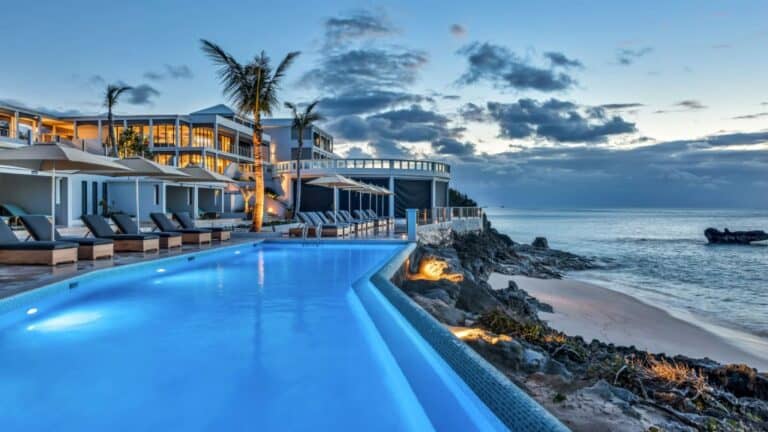
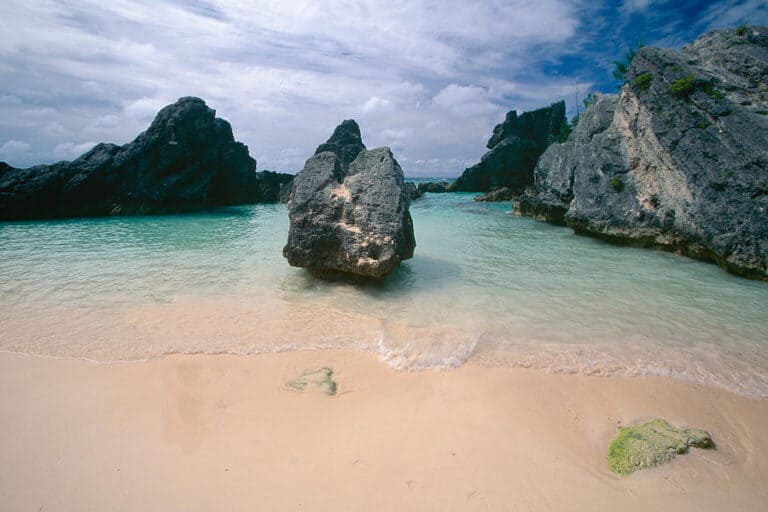
Horseshoe Bay Beach is probably the most photographed beach in Bermuda and recently rated the No.8 beach in the world by Trip Advisor! From small children to senior citizens, its wide appeal makes Horseshoe Bay a must-see when visiting Bermuda. With an adjacent kiddy beach and its low tide, Horseshoe is definitely a spot for the entire family. The expansive horseshoe-shaped beach is bordered by natural limestone cliffs and large reefs where snorkelers can explore the large variety of fish and sea life.
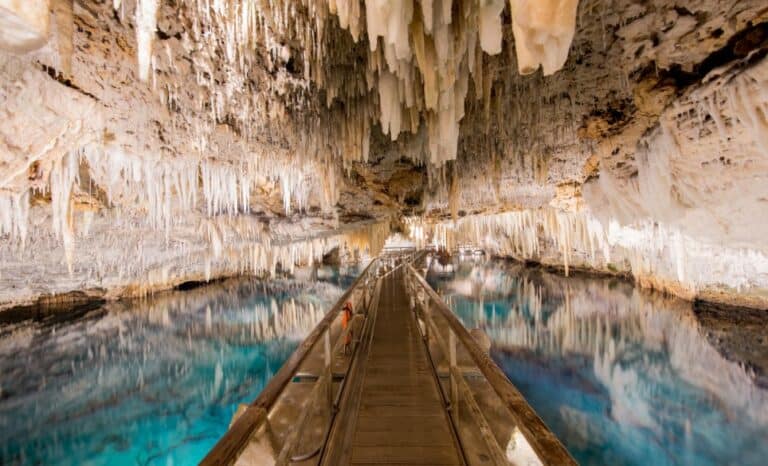
Crystal Cave is a cave in the British overseas territory of Bermuda. It is located in Hamilton Parish, close to Castle Harbor. The cave is approximately 500 m long, and 62 m deep. The lower 19–20 m of the cave is below water level.
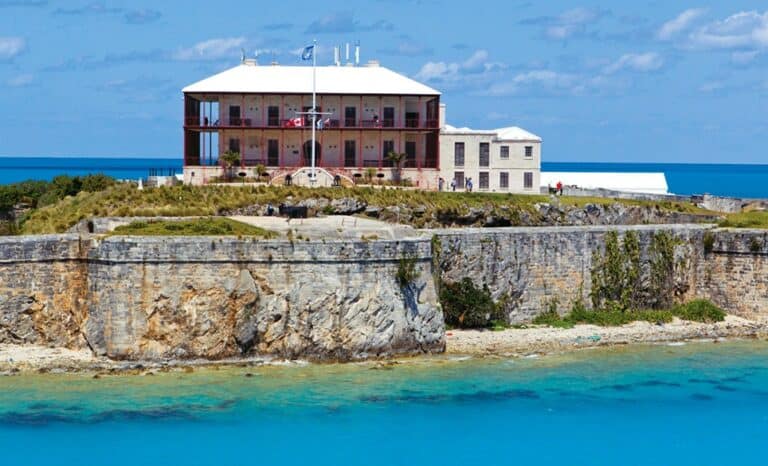
King’s Wharf is the premier port in Bermuda and the port of choice for the biggest cruise ships that visit the island. Located on the Island’s western tip and is also known as the Royal Naval Dockyard. It was built in the first part of the 19th century as a British Naval base and remained a strategic British military post until the US military established two bases in the 1950s.
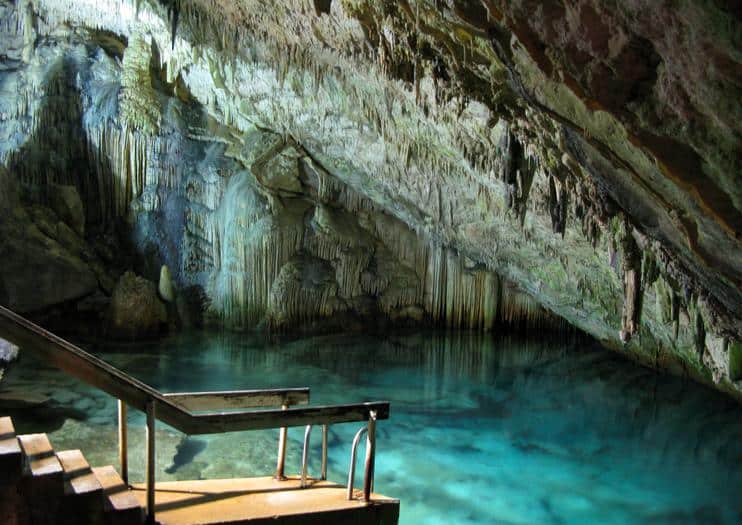
Walk lush forest trails, swim in translucent blue waters, and explore subterranean caves at this 12-acre reserve that is locally known as Tom Moore’s Jungle, named for the Irish poet who favored the area for writing. Along the trails, you’ll see mangroves, several bird species, and natural swimming grottoes like the famous Blue Hole, part of Blue Hole Park, which is located within Walsingham Nature Reserve. Before leaving, pay a visit to Bermuda’s oldest restaurant, Tom Moore’s Tavern – housed in a 17th-century estate at the edge of the reserve.
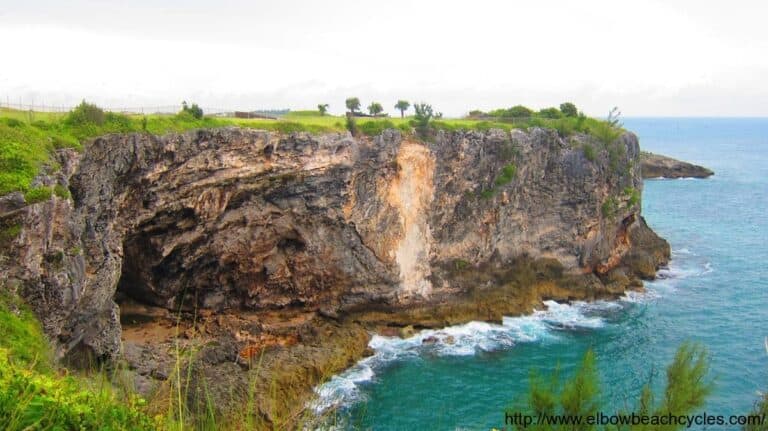
St. David’s Battery was built in 1910 and has a wonderful park associated with it called the Great Head Park. St. David’s Battery is located in St George’s Parish at St. David’s Island on a hilltop. This is the easternmost edge of Bermuda and also known as St David’s Head that comprises of Great Head and Little Head. The battery is usually opened to the public on Wednesdays.
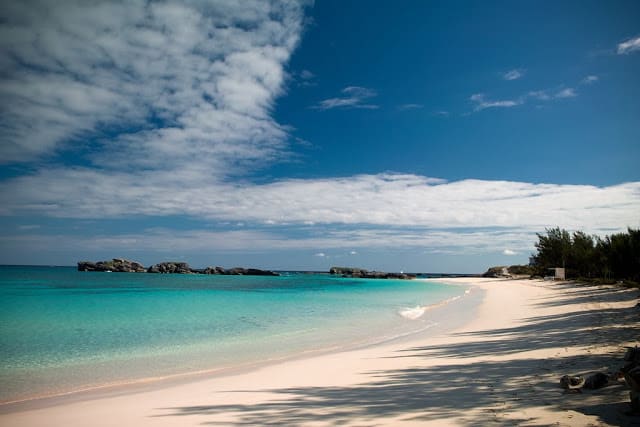
Located at the southeastern tip of Bermuda, Cooper’s Island Nature Reserve (Beach) is home to a quiet and unspoiled park with extensive walking trails, stunning views of Castle Harbour, and access to several beautiful public beaches, including Turtle Bay and the popular Clearwater Beach at Annie’s Bay.
Accommodation
Hotel or Hostel (single): $19
Double-occupancy room: $39
Food
Meals for one day: $75
Transportation
Taxis, local buses, train: $35
Entertainment
Entrance tickets, shows: $40
Accommodation
Hotel or rental home (single): $42
Double-occupancy room: $84
Food
Meals for one day: $78
Transportation
Taxis or Car rental: $45
Entertainment
Entrance tickets, shows: $44
Accommodation
Resort or hotel (single): $64
Double-occupancy room: $128
Food
Meals for one day: $83
Transportation
Car Rentals or private driver: $64
Entertainment
Entrance tickets, shows: $50
Roam the public beaches – While there are some private islands in Bermuda the majority remain open to the public and don’t charge any admission fees. Bring everything you need with you and that’s essentially a day of free entertainment.
Catch the sunrise at
Horseshoe Bay – Yes – this is the most iconic and famous part of Bermuda – but it is also one of the most compelling no matter how busy it can sometimes become. Get up early to enjoy a sunrise and you’ll have most of the beach entirely to yourself and the occasional jogger.
Stay in a vacation rental property – This is one of best the best ways to save money. Many rental homes cost less than hotels and resorts and have amenities that allow you to cook your own food which saves on the outrageous prices of food at restaurants.
Take the bus and ferry – The buses in Bermuda are clean and reliable. Many of the locals rely on the buses and ferries to get to-and-from their locations. Getting a pass will help reduce the risk of not having exact change, which is needed for taking the bus or ferry.
When planning for your trip to Bermuda, don’t forget about travel insurance! You never know what might happen and it’s better to be safe than sorry.

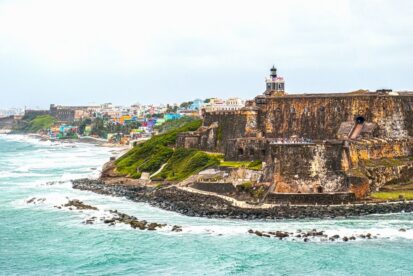


Interested in traveling the world while getting paid? Here at Diversifying Globetrotters LLC, we are partnered with Melanin On The Map and Travel Coach Network to help people across the world find financial, personal, and time freedom. Join the hundreds of others making the change to better themselves while exploring the world and adding money to their pockets.